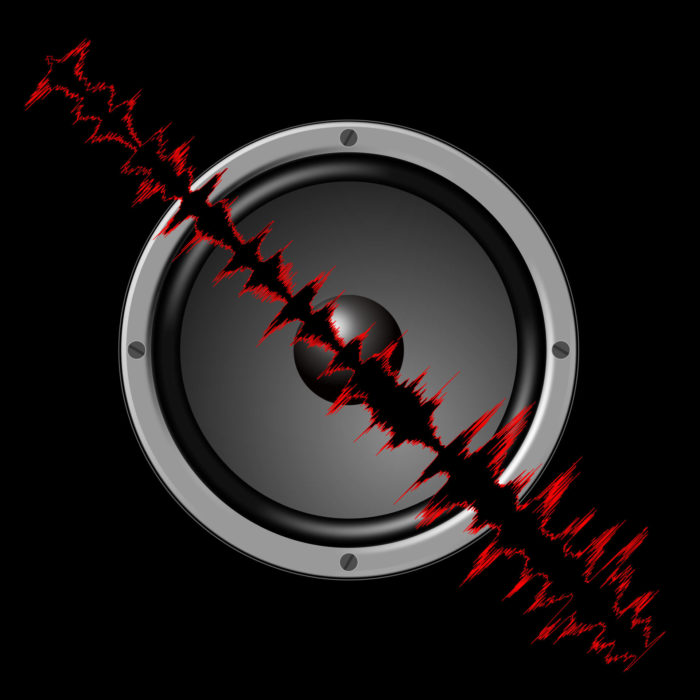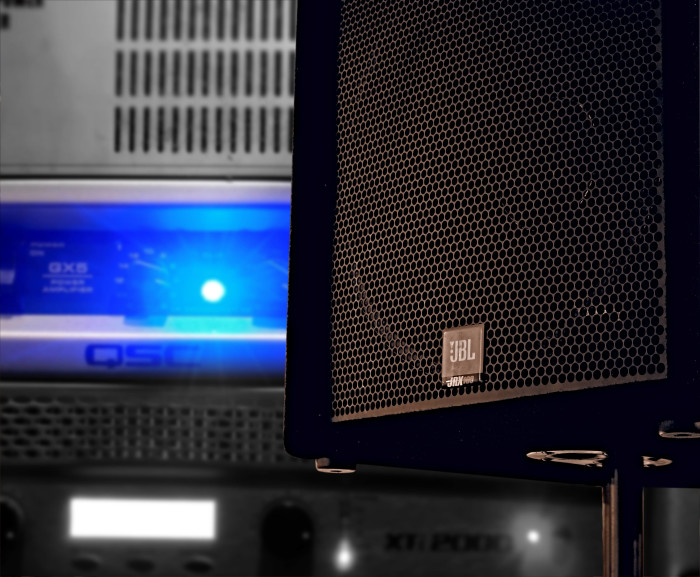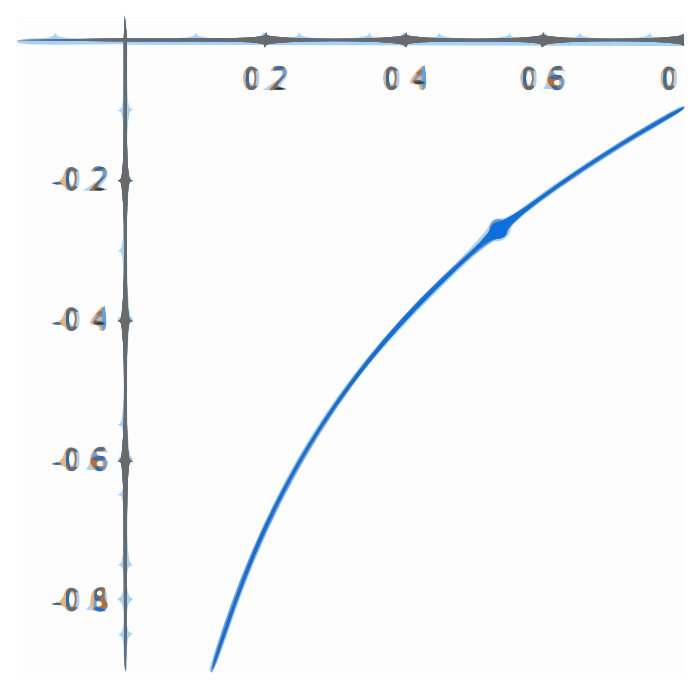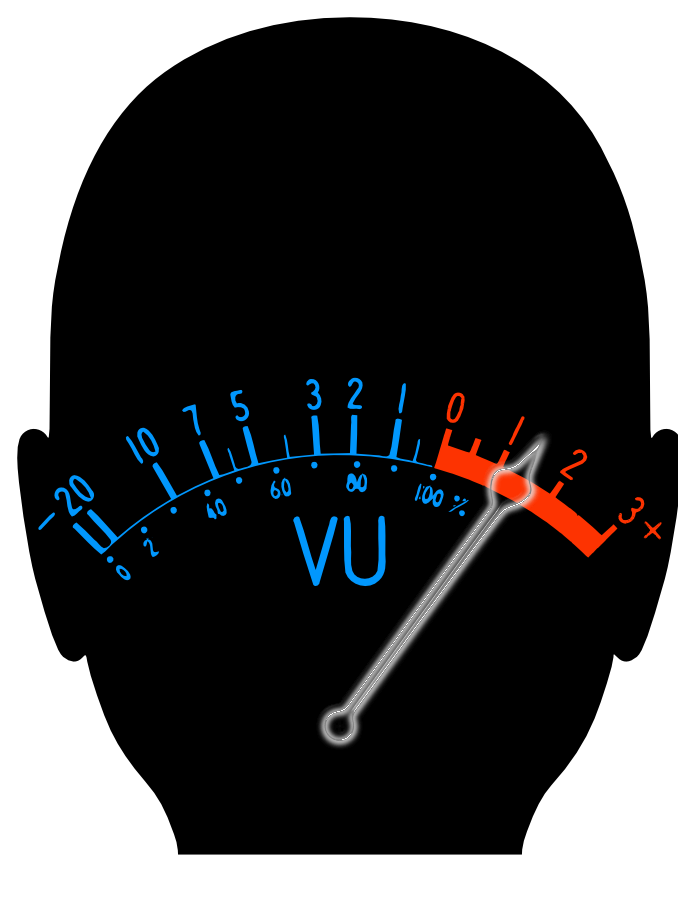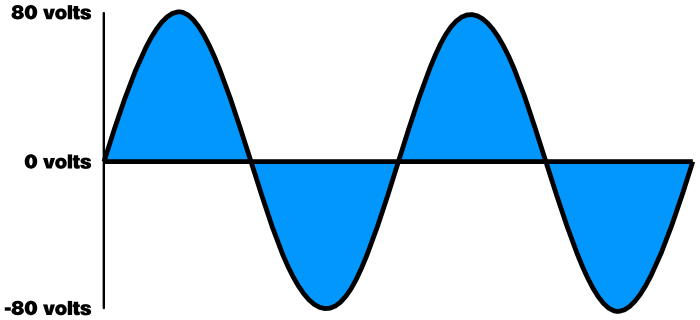It’s very likely that – if you’ve ever been involved in live-sound – you’ve heard something like this: “You have to use very powerful amps on your speakers, because clipping will blow the drivers.”
This idea is one of the most long-standing live-sound myths in existence. Its ability to stubbornly persist as an accepted notion is remarkable, although not astounding. That is, it’s not surprising that the myth survives, because it’s backed up by observations made by intelligent people.
The problem is that the observations are being interpreted incorrectly. If you want to “have the right of it,” then you need to remember this:
Clipping is not a cause of speaker failure. It can occur alongside conditions that cause speaker failure, and it can precipitate conditions that cause speaker failure, but it is not actually dangerous in itself.
Okay. Fine. Where’s any support that what I just said is correct?
Well, to start with…
Thousands Of Guitar Amps Are – Miraculously – Still Alive
How many guitar players do you know that have to regularly replace the speakers in their rigs, because those speakers are constantly getting cooked? I don’t know any.
How many guitar players do you know who’s tone includes “crunch,” or “drive,” or “fuzz,” or “distortion,” or who love it when the amp “breaks up” or “saturates?” The number is probably close to “all of them.”
Okay.
Distortion/ fuzz/ overdrive/ breakup/ whatever are ALL clipping. All of them. 100%. Some of them are clipping that happens in a circuit in front of the amp, which then gets passed through the amplifier “cleanly” (or not). Some of the most adored and sought-after sounds are the result of clipping the actual power-amp section – the bit that turns the signal into something with sufficient voltage and current to move loudspeakers around.
“Oh, but Danny, a distorted guitar amp is different from a distorted PA.”
Nope. Not in a fundamental sense.
Now, sure, an actually-clipping solid-state power amplifier may generate a different distribution of harmonics than an actually-clipping tube driven guitar amplifier, but the same thing is going on. A clipped signal is being pushed across loudspeaker drivers. Amazingly, the guitar amp’s speakers aren’t dying. Why?
Because the power they’re receiving is within their design limits. The distortion involved is barely relevant.
The Problem Is Too Much Power
What I’ve come to understand over the years is that, assuming everything else is copacetic, loudspeakers are only killed by amplifiers that supply too much power. It might be too much power for too long, or it might be too much power for a short time…at a low frequency.
That’s it.
So, if all kinds of guitar amplifiers aren’t killing their speakers, and if the problem is too much power, why does the myth persist? Why do people insist on mating big amplifiers to speakers, with the assumption that “headroom” will prevent drivers from meeting an untimely end? It’s pretty simple, actually – people tend to associate correlation with causation, even when the association is wrong.
Classic examples of this are found in human history. Something bad happens to a group of people at around the same time of a lunar eclipse, or when a comet is visible in the sky, and they start assuming that the cosmological event is the cause of their problem. In the same way, enough speakers have been wrecked while a clip light was illuminated to make people think that clipping was what wrecked their drivers.
…and so, they start to believe that running a really powerful amp without clipping is safer than running a less-powerful amp into clipping. It isn’t. Their original problem was that their “too small” amplifier can actually deliver a lot more power than they expect.
Amps Are More Powerful Than You Think. For An Instant.
Let’s say that we’ve just bought an amplifier, and we’re doing what we should be doing: We’re reading the manual. We get to the end, where the specifications live. The manufacturer says that the amp can deliver 400 watts per channel, continuous, at some impressively small distortion factor (like 0.02%), into an 8 ohm load.
Why is all that qualification necessary? It’s a 400 watt amplifier, right?
Not really.
As I’ve come to understand them, amplifiers are devices that put voltage across an attached device. You know – a speaker. Because they put voltage across the speaker, current flows. Because voltage and current are flowing, the circuit has an attendant amount of power being dissipated by the speaker – the power is converted to heat and sound.
The thing is, the voltage coming out of the amplifier is NOT constant. It’s not direct current…it can’t be. Direct current doesn’t change over time, so it can’t represent a sonic event. A sonic event changes over time by nature. No, the signal coming out of the amplifier is time variant. It’s alternating current, rather similar to what comes out of a “mains power” wall socket in a building. the primary differences are that the voltage coming out of the amplifier is significantly lower, and that we expect the signal from the amplifier to have a lot of frequencies present at similar voltages.
Music, in other words.
This creates a bit of a bugaboo. If the voltage from the amplifier varies as time passes, then the power delivered to the loudspeaker also varies as time passes. If we hook up a sine-wave generator to the amp, and then graph the amp’s output, we would get something like this:
There’s something very curious here. At the instant that the voltage is 0, no power is being presented to the loudspeaker. At that moment, we have a 0 watt amplifier. No voltage means no current, which means no power. Of course, at the very next instant the voltage is some non-zero value, which means that the power across the speaker is also non-zero.
What’s also curious – and key to this whole article – is what happens at the signal peaks. You’ll notice that they occur at 80 volts. If power is v^2/r (the square of voltage over the load resistance), then, for an instant, the amplifier delivers 800 watts to the speaker.
But it’s a 400 watt amp! What gives?
Remember all that “qualification” that was attached to that 400-watt number? It’s all required because the amp spends most of its time delivering more or less than 400 watts to our 8 ohm loudspeaker. The 400 watt figure is an average meant to convey what the amplifier can meaningfully do over the course of time, ultimately in terms of heat and sound produced by the speaker. For audio, we tend to find that values derived from RMS (Root Mean Square) voltages track well with how humans hear, so it’s very likely that the “continuous power” rating on our amp is the energy delivered from the RMS voltage that we can swing from the outputs.
For an amp that has a peak output voltage of +/- 80 volts, the sine-wave RMS voltage is about 56.57 volts. Using v^2/r, that comes out to 400 watts. If the loudspeaker is rated for 400 watts of continuous power, then we’re fine.
As long as we don’t push the amplifier too hard.
Not because of clipping, but because our amp is more powerful than we realize.
The Area Under The Curve
Here’s our diagram again. We’ve got ourselves a nice, undistorted signal. To help visualize the power being delivered to the loudspeaker, I’m going to fill in the “area under the curve,” or the space between 0 voltage and the amp’s output.
So, what happens if we push the amp beyond what it can do with inaudible distortion? Well, the amp can’t give us more voltage than it’s built to create, but it can give us the maximum voltage for a longer time. It might be able to do this “nicely,” by using internal dynamics processing to prevent the signal from actually generating a lot of nasty harmonics, or the amp might get into actual, unpleasant, super-saturated harmonic distortion overdrive. In either case, the output signal peaks flatten – and as they do, the continuous power delivered to the speaker gets closer and closer to the maximum power available from the amplifier. If I overlay the most extreme case of this over our original sine-wave, you can “see” the problem:
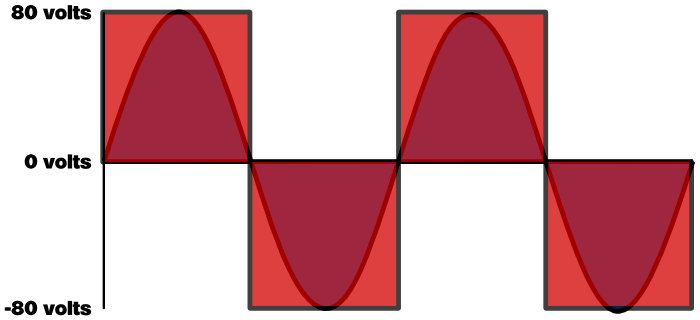
The closer you get to driving the amp into square-wave territory, the more that the RMS voltage and the peak voltage become the same thing. Assuming that the amp doesn’t go into thermal shutdown or engage other protection, you can deliver a LOT of continuous power into your loudspeaker. In terms of the example I’ve been using so far, you could be putting up to TWICE the loudspeaker’s rated power into the poor thing.
Do that for long enough, and the voice coil (or even something else) will overheat and fail. You’re left with smoke and silence.
Picking Up The Pieces
As you can see, the problem really isn’t clipping. Sure, clipping was involved in the process of wrecking the example loudspeaker, because it’s what had to happen for us to push our fictional amp into “too much power” territory.
What if we’d have used a bigger amp, though?
Here’s where things get into human psychology.
If we were willing to push a small amp into audible clipping (or even just limiting) for long enough to kill a loudspeaker, why would we think that we wouldn’t push a larger amp just as hard – if not harder? The big amp’s signal will stay nice and clean for much longer, and we might not be able to recognize the sounds of the drivers being beaten up. That being the case, we push our much larger amp well into the same overall power output, and our drivers start to get cooked again. Of course, we don’t see any clip lights, so we feel safe. The loudspeakers don’t die right away, because overpowering is rarely an “instant death” event, but they will die eventually. We didn’t see those evil little clip lights, though, so we assume that it’s just “wear and tear” or “defective drivers,” or “cheap gear.”
…but it was the same thing all along. Too much power.
Too much power is still the operative problem, even when true clipping at the amp hits a passive crossover and dumps extra energy into a high-frequency driver. Sure, if the amp hadn’t clipped, then that extra power wouldn’t have been present…but why were you running the rig so hard (and with such overpowered amps) that the power generated from the harmonics in a clipped signal could liquefy the HF driver’s voice coil? How could you stand to even listen to that? A smaller amp, clipped to the same degree, wouldn’t have killed the driver, although it would still have sounded terrible.
“Underpowering” isn’t the problem. Clipping isn’t the problem. Too much power and too much human error are the problem.

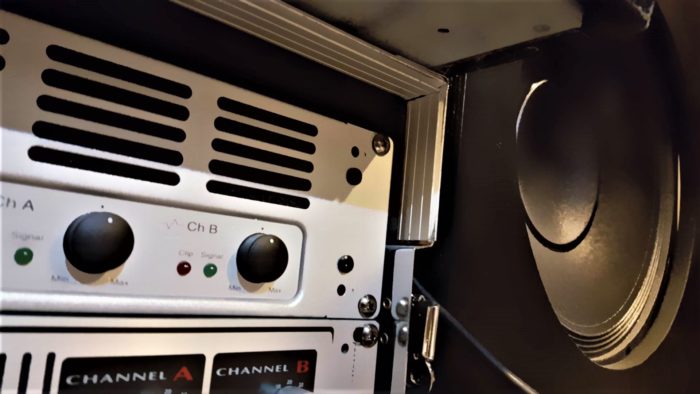 Want to use this image for something else? Great! Click it for the link to a high-res or resolution-independent version.
Want to use this image for something else? Great! Click it for the link to a high-res or resolution-independent version.